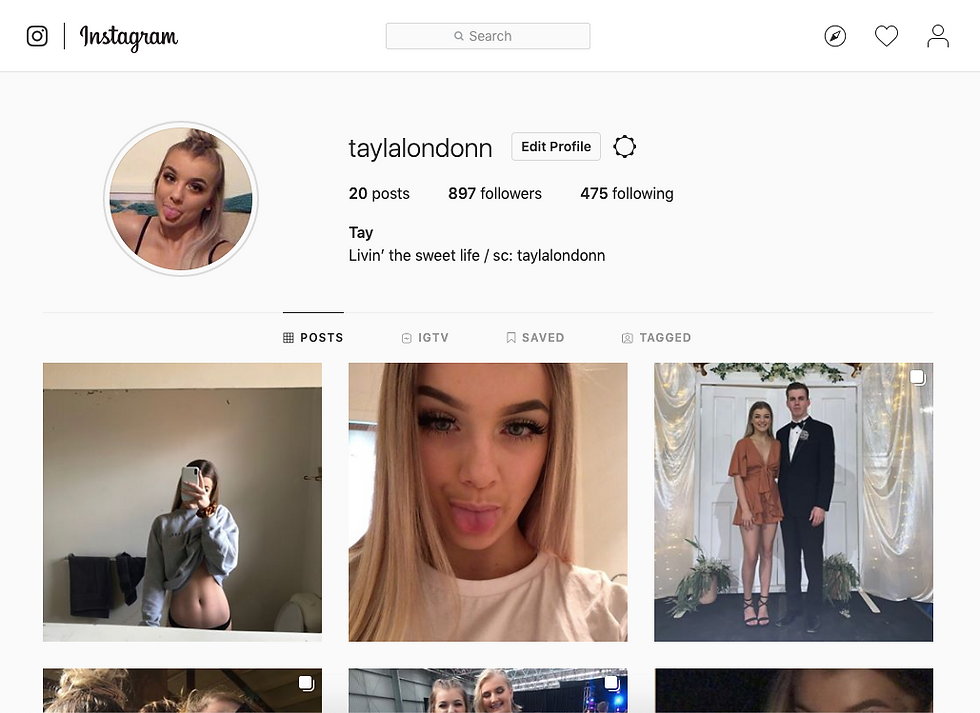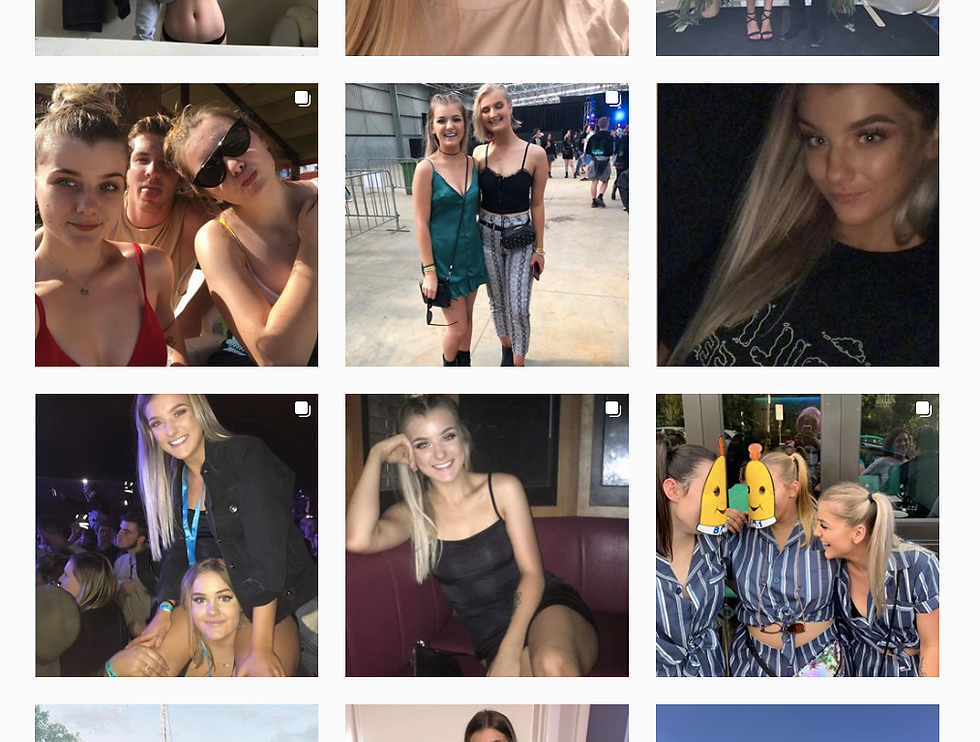WHO ARE WE
- Tayla London

- Oct 31, 2019
- 3 min read


We all hide a part of our lives from social media. From posting only the positives of our lives to creating an entirely anonymous identity to post our thoughts, the era of the web has changed the way we look at the privacy of the online world and the way we view ourselves.
Goffman suggests we have a front stage and a backstage (Bullingham, 2013 p. 2), one persona we reveal to the public and another we only share with ourselves. Similar to having masks we switch depending on our surroundings. His theory resonates with the idea of only sharing feelings or particular ideas with trusted friends or family, it all relates to privacy and our level of trust.
Constructing your own online identity gives us insight as to what people share but to more deeply understand the difference between public and private self (Marshal, 2010 p. 40) we must deconstruct and analyse our own online identity and therefore understand what we are choosing to share or hide from the eye of the public.
As a millennial, we tend to post only the highlights of our lives. We use our social media accounts or online identities to connect with other users, but more commonly we just use it to show our front stage self (Bullingham, 2013 p. 2). This promotes the idea that our lives are consistently full of social gatherings, travelling or brunches with friends showing an ideal life, possibly just a life we wish we led.

This assumption of a perfect life results in many millennials feeling isolated because these fake personas they possess and show the online world do not connect with individuals resulting in these fake but public profiles being all that we have left.
Analysing my own online identity showed me that I was projecting the desired image of myself, one that is not realist nor accurate. This allowed me to understand that I had subconsciously been altering my online presence to meet my peers’ expectations, a concept Hall and Carton explained in “Am I who I say I am?” (Hall, 2017 p. 2-3).
The same projection can be seen across more than just my Instagram, Facebook or Twitter it can be seen among many different platforms where individuals have public and private accounts to multiple platforms (such as Instagram). This allows individuals to have one “professional” or “highlighted” front stage (Bullingham, 2013 p. 2) account, and one private account where they can post the personal, unflattering, unfiltered thoughts. In accord, Hall and Cartons results suggest individuals are more likely to post the positives of their lives to social media platforms (Hall, 2017 p.10).
Questioning why we feel the need to hide a part of our lives from our online identities allows us to realise the importance of self-acceptance in an ever-growing and changing society. Understanding who we are, who we intend to be and what the message we intend to send is will help us understand if the person we portray online is realistic.
Focusing on wellness and the positives of online platform use, such as when Instagram deleted likes from user's posts promotes overall mental health, removing the idea of validation from “likes”. Does this reduce the likelihood of users having two Instagram accounts from fear of rejection? Or does it keep the same issues of lack of stability in our online culture and multiple persona society?

We all struggle to identify with who we are or what we want to become at a young age. Online platforms allow us to create different versions of ourselves, possibly completely different versions, so that we can interact with others to communicate and interact, but often while connecting with strangers we are left completely isolated while ignoring the ones we are surrounded by
These online personalities are a part of 21st-century life, but whether they leave us eternally disconnected will have individuals pondering. Do we know ourselves or our friends? The idea of having so many different personality’s leaves an abundance of questions.
But the eternally lingering question is, who are we?
@taylalondonn


Comments